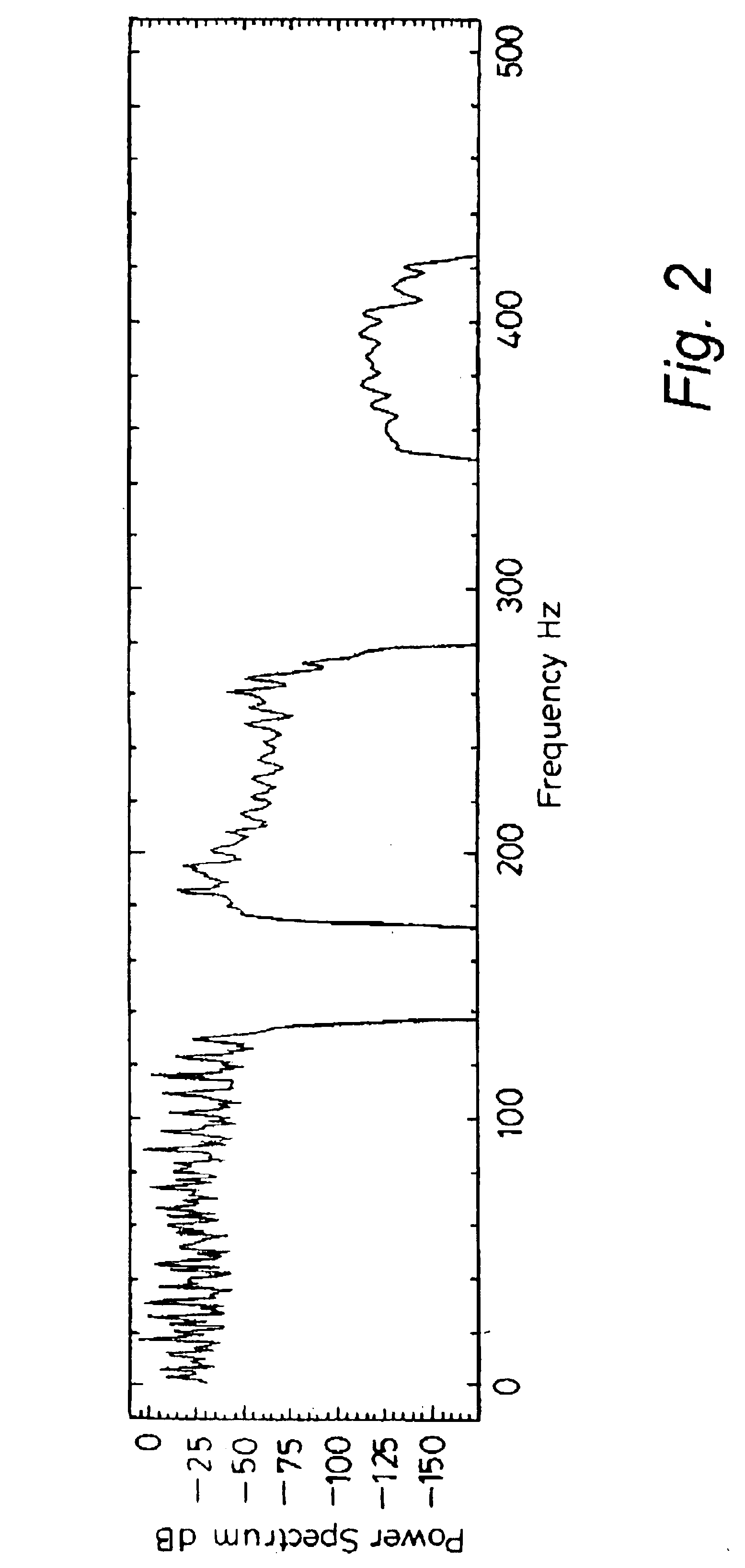Drill string telemetry system
a telemetry system and drill string technology, applied in the field of drilling string telemetry system, can solve the problems of low effective transmission rate, high operating temperature, and compatibility with standard drilling procedures, and achieve the effect of reducing surface-generated noise and improving noise reduction
- Summary
- Abstract
- Description
- Claims
- Application Information
AI Technical Summary
Benefits of technology
Problems solved by technology
Method used
Image
Examples
Embodiment Construction
[0040]FIG. 1 shows a schematic a drawing of a telemetry system according to the present invention.
[0041]A surface top drive 1 rotates a drill string 2 and a bottom hole assembly (BHA) 3. A downhole torsional wave actuator (i.e. an acoustic transmitter) 4 is mounted on the drill string near the upper end of the BHA and is acoustically isolated from the rest of the BHA by a baffle 5. At the lower end of the BHA is drill bit 9. Torsional acoustic wave signals propagate up the drill string to be detected at the surface by a measurement sub (i.e. an acoustic receiver) 6.
[0042]Above the measurement sub, a steel reflector 7 terminates the drill string and is connected to the top drive via a linking sub 8. The reflector reflects much of the acoustic noise generated by the top drive and propagated through the linking sub away from the drill string, so that only a relatively small proportion of surface-generated noise enters the drill string. The reflector is able to do this because it has a ...
PUM
 Login to View More
Login to View More Abstract
Description
Claims
Application Information
 Login to View More
Login to View More - R&D
- Intellectual Property
- Life Sciences
- Materials
- Tech Scout
- Unparalleled Data Quality
- Higher Quality Content
- 60% Fewer Hallucinations
Browse by: Latest US Patents, China's latest patents, Technical Efficacy Thesaurus, Application Domain, Technology Topic, Popular Technical Reports.
© 2025 PatSnap. All rights reserved.Legal|Privacy policy|Modern Slavery Act Transparency Statement|Sitemap|About US| Contact US: help@patsnap.com



